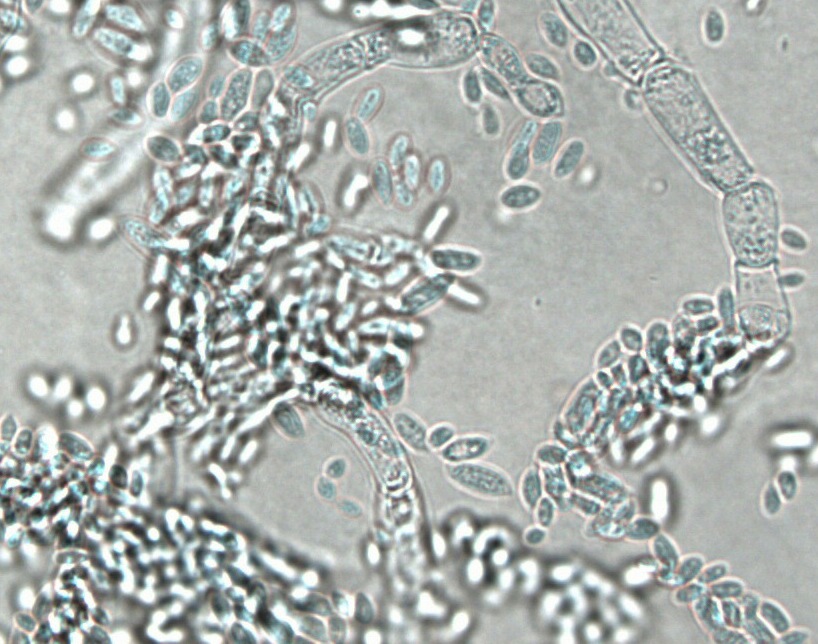Mold Library
Aureobasidium

Distribution
Species of Aureobasidium are saprophytic or weakly parasitic. They are commonly isolated from plant debris, soil, wood, and textiles. Indoors, Aureobasidium is often found on damp materials, such as caulk or damp window frames in bathrooms.
Growth Characteristics
This is one of several genera known as "black yeasts", a group of fungi characterized by dark, pasty colonies. In early stages of growth, colonies of Aureobasidium are fast growing, smooth, flat, and covered with slimy masses of cream or pink conidia, later becoming brown or black and velvety at maturity.
Microscopic Characteristics
When the colony is young, pale unicellular budding yeast cells are the only structures observed microscopically, forming in tufts. In time, as the colony darkens and becomes velvety, septate hyphae become visible, at first hyaline but becoming brown at maturity. Aureobasidium has no distinct conidiophores; rather, conidia are produced in masses along the hyphae on short lateral branches or pegs. The conidia are one-celled and oval to cylindrical in shape. These conidia continue to multiply by budding and form secondary blastoconidia. Thick-walled, one- to two-celled, dark brown arthroconidia may be produced in old cultures.
Health Effects
Aureobasidium spores can act as allergens in sensitive individuals. Some species are weakly pathogenic and can cause infections in the skin, nails, and eyes; however, infections caused by Aureobasidium remain limited and uncommon.
